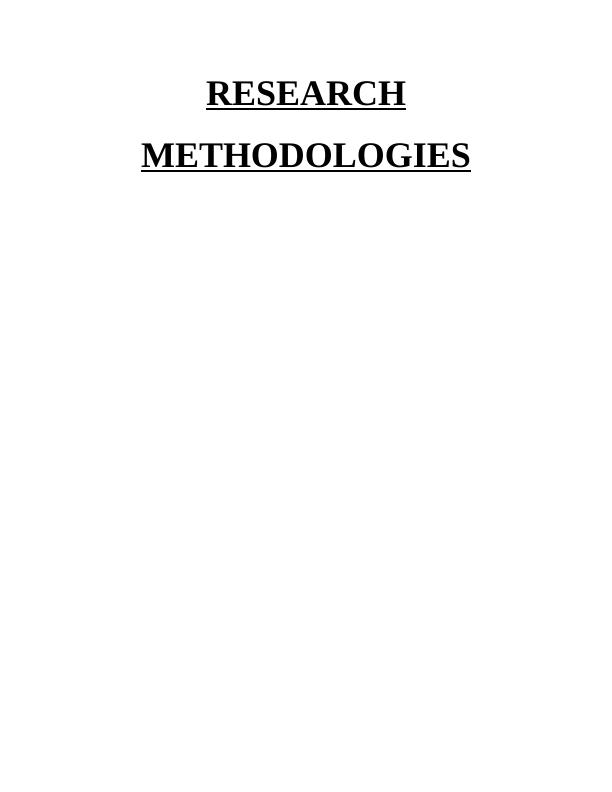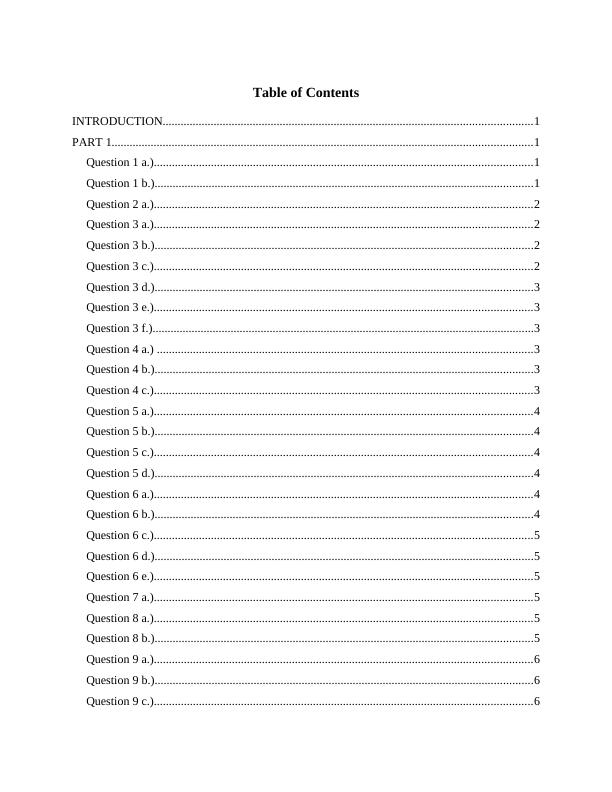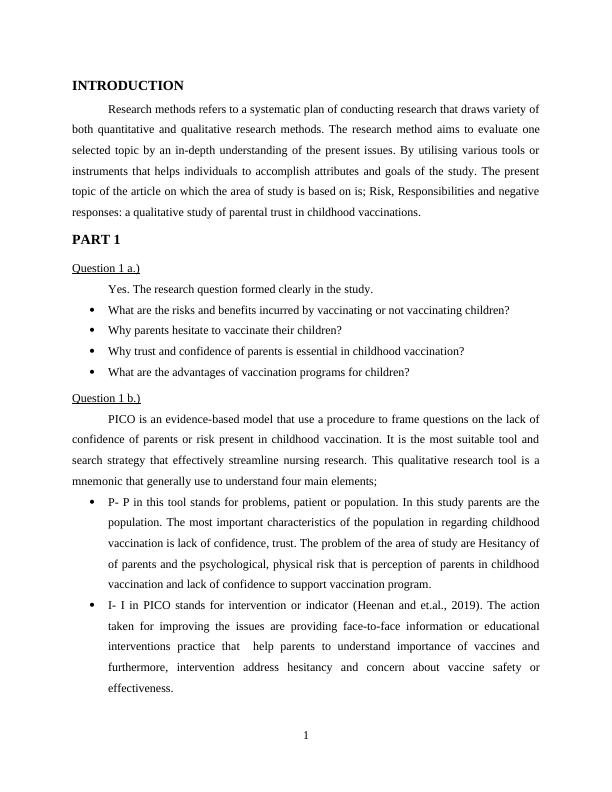Ask a question from expert
(PDF) Risk, responsibility and negative responses
12 Pages3270 Words61 Views
Added on 2021-01-02
(PDF) Risk, responsibility and negative responses
Added on 2021-01-02
BookmarkShareRelated Documents
RESEARCHMETHODOLOGIES

Table of ContentsINTRODUCTION...........................................................................................................................1PART 1............................................................................................................................................1Question 1 a.)..............................................................................................................................1Question 1 b.)..............................................................................................................................1Question 2 a.)..............................................................................................................................2Question 3 a.)..............................................................................................................................2Question 3 b.)..............................................................................................................................2Question 3 c.)..............................................................................................................................2Question 3 d.)..............................................................................................................................3Question 3 e.)..............................................................................................................................3Question 3 f.)...............................................................................................................................3Question 4 a.) .............................................................................................................................3Question 4 b.)..............................................................................................................................3Question 4 c.)..............................................................................................................................3Question 5 a.)..............................................................................................................................4Question 5 b.)..............................................................................................................................4Question 5 c.)..............................................................................................................................4Question 5 d.)..............................................................................................................................4Question 6 a.)..............................................................................................................................4Question 6 b.)..............................................................................................................................4Question 6 c.)..............................................................................................................................5Question 6 d.)..............................................................................................................................5Question 6 e.)..............................................................................................................................5Question 7 a.)..............................................................................................................................5Question 8 a.)..............................................................................................................................5Question 8 b.)..............................................................................................................................5Question 9 a.)..............................................................................................................................6Question 9 b.)..............................................................................................................................6Question 9 c.)..............................................................................................................................6

PART 2............................................................................................................................................6Reflection....................................................................................................................................6CONCLUSION................................................................................................................................8REFERENCES................................................................................................................................9

INTRODUCTIONResearch methods refers to a systematic plan of conducting research that draws variety ofboth quantitative and qualitative research methods. The research method aims to evaluate oneselected topic by an in-depth understanding of the present issues. By utilising various tools orinstruments that helps individuals to accomplish attributes and goals of the study. The presenttopic of the article on which the area of study is based on is; Risk, Responsibilities and negativeresponses: a qualitative study of parental trust in childhood vaccinations.PART 1Question 1 a.)Yes. The research question formed clearly in the study.What are the risks and benefits incurred by vaccinating or not vaccinating children?Why parents hesitate to vaccinate their children?Why trust and confidence of parents is essential in childhood vaccination?What are the advantages of vaccination programs for children?Question 1 b.)PICO is an evidence-based model that use a procedure to frame questions on the lack ofconfidence of parents or risk present in childhood vaccination. It is the most suitable tool andsearch strategy that effectively streamline nursing research. This qualitative research tool is amnemonic that generally use to understand four main elements;P- P in this tool stands for problems, patient or population. In this study parents are thepopulation. The most important characteristics of the population in regarding childhoodvaccination is lack of confidence, trust. The problem of the area of study are Hesitancy ofof parents and the psychological, physical risk that is perception of parents in childhoodvaccination and lack of confidence to support vaccination program.I- I in PICO stands for intervention or indicator (Heenan and et.al., 2019). The actiontaken for improving the issues are providing face-to-face information or educationalinterventions practice that help parents to understand importance of vaccines andfurthermore, intervention address hesitancy and concern about vaccine safety oreffectiveness.1

End of preview
Want to access all the pages? Upload your documents or become a member.
Related Documents
PART 11 Reflection 6 CONDOLOGIESlg...
|12
|3270
|104
Research Methodology TABLE OF CONTENTSlg...
|13
|3531
|451
Research Methodology for Immunisation: Factors Contributing to Parental Vaccine Hesitancylg...
|16
|3874
|197
Vaccine Hesitancy - an overviewlg...
|10
|3262
|16
Matern Child Health Journallg...
|7
|5431
|12
Critical Analysis: Coercive vs Supportive Strategies to Improve Vaccination Rateslg...
|17
|4616
|97